MARC JACOBS shirt tied around waist, skirt and shoes. REPOSSI earrings and rings. Photography and Styling by Melissa Levy
Under the sophisticated eye of Melissa Levy, multidisciplinary creative and filmmaker Kim Jones takes on a new form.
When Melissa Levy first met Kim Jones around half a decade ago, there was instant creative chemistry.
It was a photo shoot in New York that Levy was styling for SUIT Portrait Series, a book that featured the women who shaped the life and career of designer Dion Lee. Both women were part of a list of 50, which also included Vogue editors Christine Centenera and Margaret Zhang. “I remember being like ‘who’s this woman? She’s amazing’.” Levy, a photographer and contributing editor for Vogue Australia, says of Jones.
Though it was a fast shoot, they would randomly bump into each other at industry events over the years. “I remember more recently she just invited me out after in New York and it was Fashion Week,” Jones recalls. “She just texted me and was immediately just like you know, ‘Where are you? Do you want to meet up?’ And I met up and she was with like 30 of her friends and just introduced me to every single one of them and we had a great night out.” That night—and Levy—became an example to the multidisciplinary creative and filmmaker of the strength of the Filipino connection.
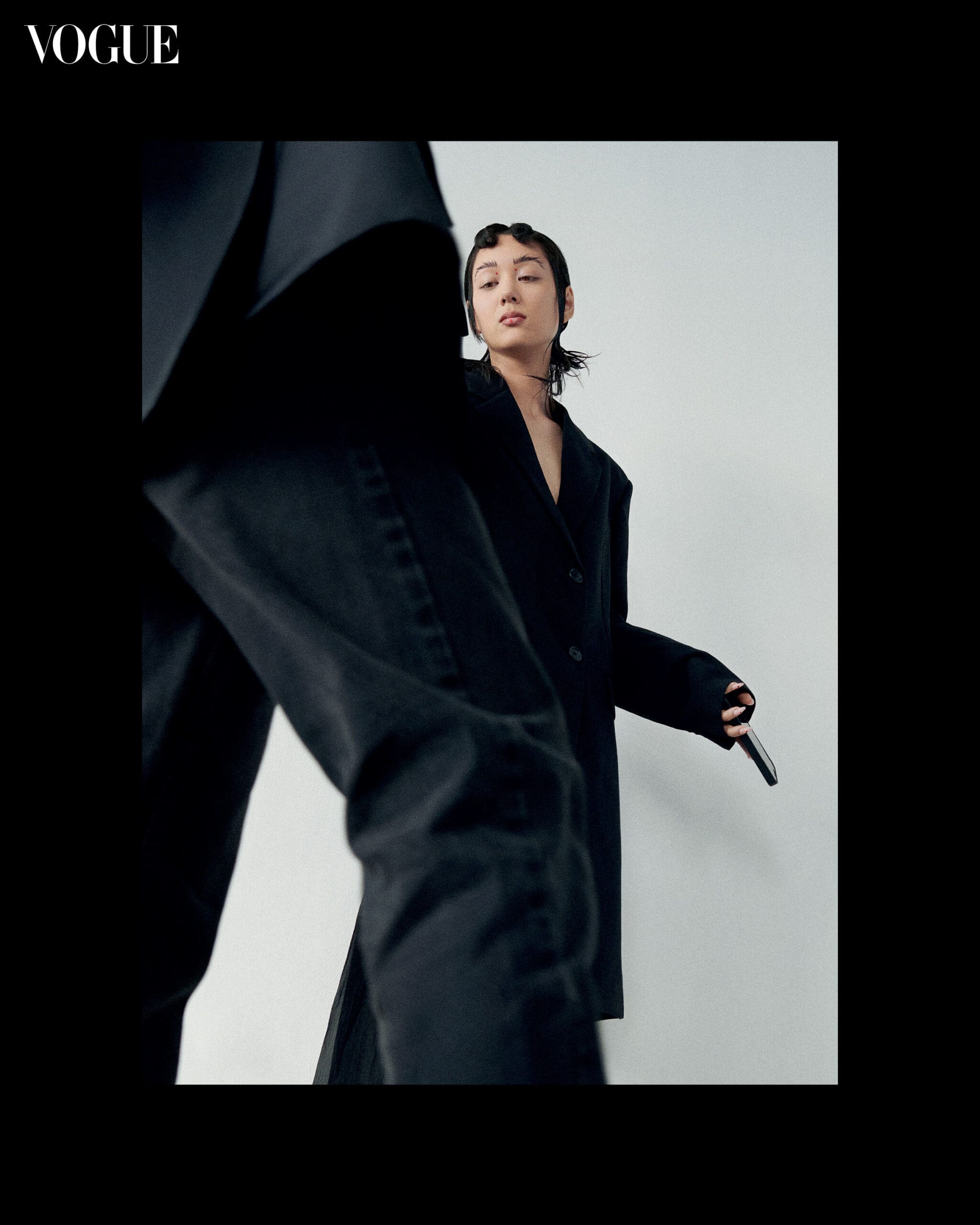
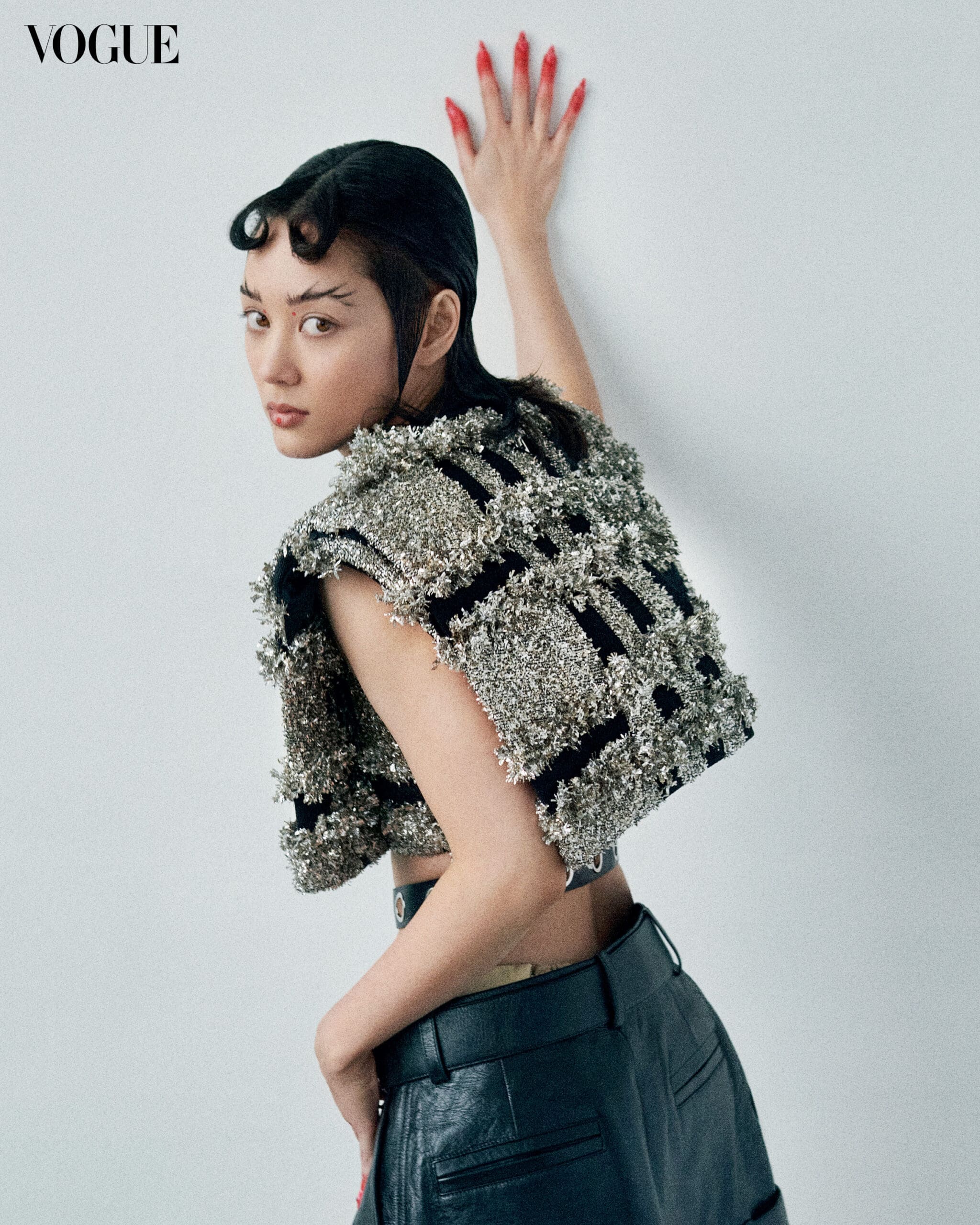
Vogue Philippines put this chemistry and connection to task as they asked both creatives to work on a fashion spread. They were given full reins of the shoot, allowing them to collaborate and conceptualize as they deem fit. The result? A set both described as being filled with warmth, sensitivity, and trust.
“Melissa knows what she wants to celebrate in women,” Jones shares. “You don’t feel objectified when you’re in front of a woman photographer. There’s a certain intimacy there that you just really don’t get otherwise. And I really felt free, you know, and safe knowing that she cared about me. This was really a collaboration as well for both of us, but I felt like really, she makes you feel like you’re celebrated for all of your flaws, all of your belly rolls, all of your little laugh lines. I think that’s really beautiful.”
For Levy, it felt like a dream moment. “It felt like all these years, 15 years of experience in the industry, going to fashion school, assisting between London and New York and Europe, it kind of led to that moment, and it made all that hard work, and everything kind of makes sense,” she explains.
The two women sat down and talked more about their collaboration, touching on the power of diversity, identity,
and representation.
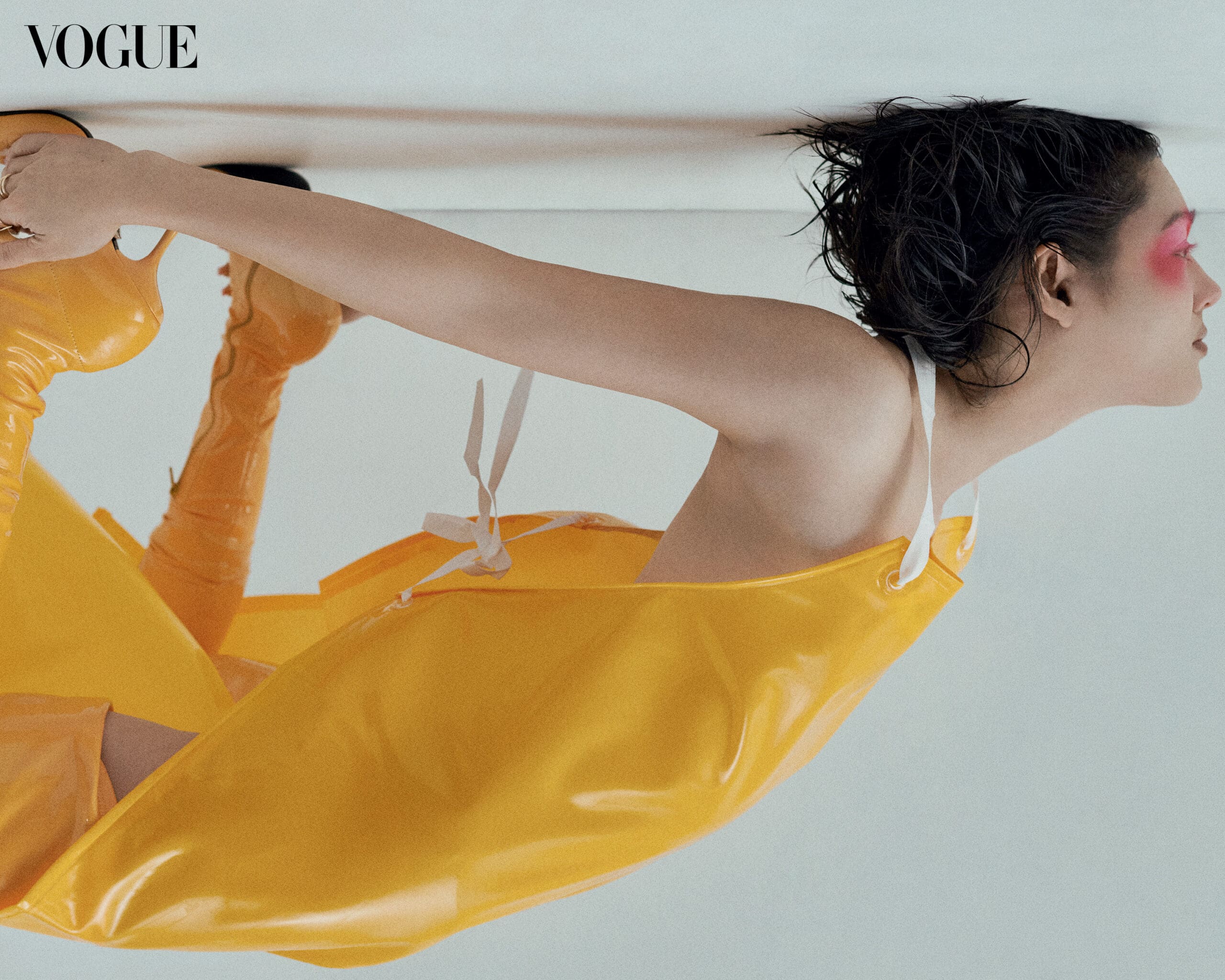
Kim Jones: I guess the biggest thing for me like, being in front of your lens, obviously, for the first time, I want to ask you how you felt about that? And, like, because it was kind of it was the first one for you, too?
Melissa Levy: Where do I start? We met on a Dion Lee shoot, about five years ago. When I met you, it was like, meeting this person who was perhaps in my imagination for a long time, having not really, understanding how it would be possible to live in the Philippines in a modern way. Because my context of the Philippines is as a child and a young teenager, in the provinces. When I met you, my mind and imagination began to see what the Philippines could be. To reconnect so many years later, and to shoot you in such a free way, and in a way that was bound in trust, it was pretty amazing, especially since Vogue Philippines only launched a few months prior. So yeah, it just felt really natural and organic and beautiful. Having been behind so many people for so many years, and then take control and be the person behind the lens, the person actually articulating the expression to the fullest degree. Styling can be so limiting, there are so many variables, however [With] photography, you create the image. Yeah, I feel like it really felt like us.
KJ: I remember reading an interview from you and in the interview, you spoke about photographing women and how you like photographing them—I think you said in their 30s—just because they’re more aware. I’m in my 30s, we’re more aware of, you know, our body, we’re more comfortable. I think we filled in all of the gaps. You know what I mean? It’s like putting on a bodysuit. We’ve kind of filled in the proverbial bodysuit. And I know I definitely felt that by being in front of your lens and I think the trust, I’m glad you mentioned the trust factor, too. Because it’s almost like with acting as well like when you know you’re in a safe space I think you can explore different sides of yourself a bit more.
We’re so much more powerful and complicated, complicated in all the best ways
Melissa Levy
Vogue Philippines: What does female power mean? How has fashion empowered women?
ML: Well, I don’t think that it really does. Fashion doesn’t exist in a vacuum. Yes, if you put on a McQueen suit or slip into an Alaïa dress it transforms you in a very powerful way. However, across the board, I don’t think our industry does. Perhaps since #MeToo, four and a half years ago, things are only starting to shift, prior to that women shooting at the top of the industry was an anomaly. I was catching up with a photographer, a woman photographer, she mentioned when she started 15 years ago, in New York, everyone was telling her to be a stylist; why was she even bothering assisting or trying photography?
#Metoo helped move some sediment, publications were producing all female issues, agencies began to push for more female artists. We are making progress, but we still have a long way to go. What does female power mean? KJ, how would you answer that?
KJ: Well, I mean, I think on the broader scale, you know, fashion as a whole hasn’t had the best track record in empowering women, especially, you know, within the labor force. I think maybe this question is more directed to creatives. Which, again, I mean, I don’t know, I have a little bit of a bitter taste in the mouth. I read very recently that only five percent of women are creative directors in fashion houses. So I don’t want to answer this question with the idea that we have, that we’re where we’re supposed to be in terms of, you know, diversity, in terms of, especially, representation, whether that be with women or whether that be in the queer space—it’s not quite where it’s meant to be. How does it empower women in the creative space? I do think, again, we don’t really have representation of you know, all body types on the runway with women. I think we’re kind of not there yet. I definitely think that we’ve improved. And I think that’s really exciting. But that, I think, is a larger discussion.
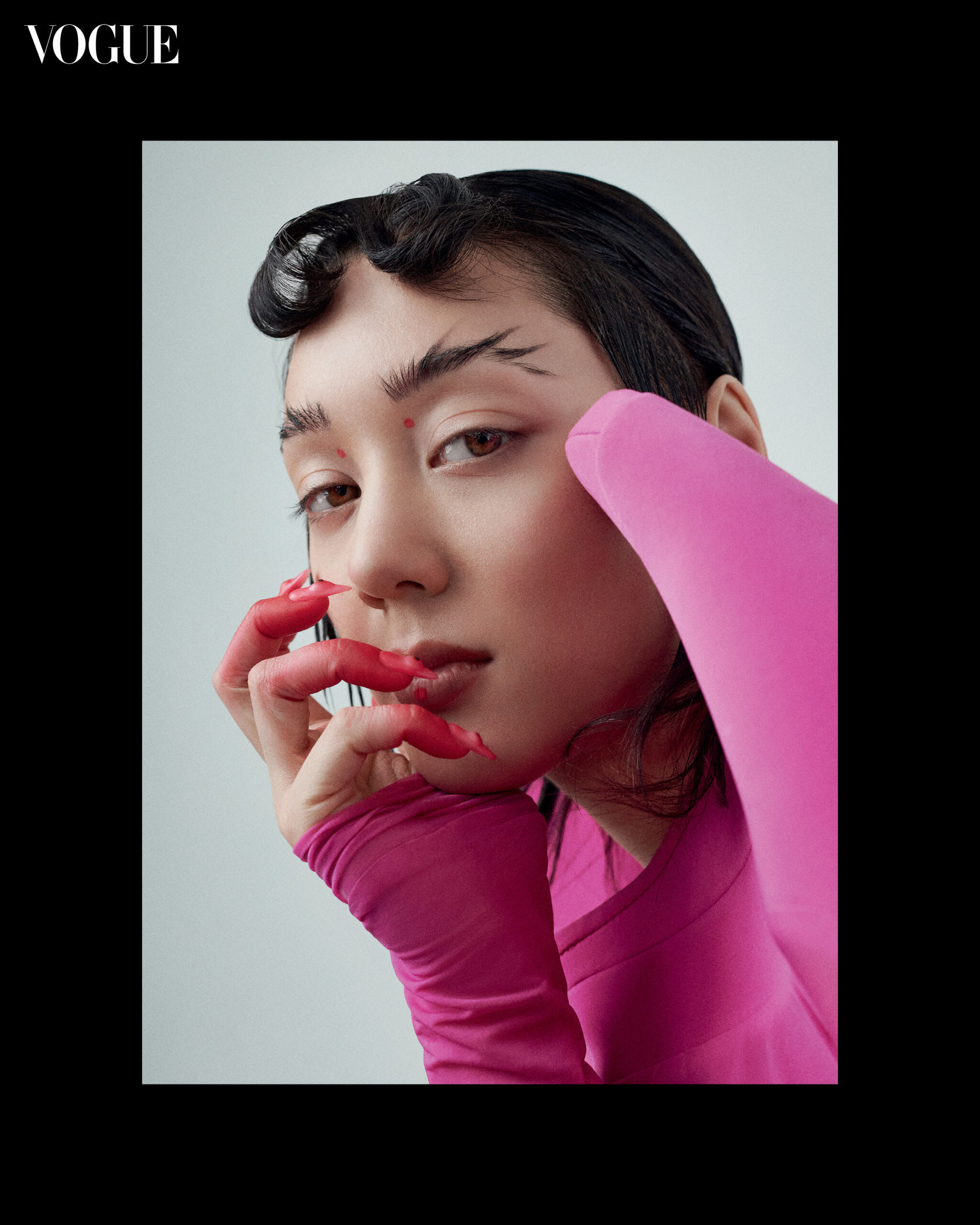

VP: How, instead, could fashion further empower women? What changes could be done?
KJ: I think that having opportunities like these, where, you know, creatives like Melissa, who have such a deep seated understanding of the creative space, but also [know] how to communicate, I guess, artistic expression. I think that’s really important and having spaces like this, where we can collaborate. I’ve been in front of the lens of both male, female photographers, and I definitely think there’s a certain sensitivity that Melissa brought to the set and to the images. I think with work like this, and allowing women to collaborate and to be free and to be able to express themselves and their ideas of beauty, or how they feel most beautiful, and creating a safe space for that—I think that’s a huge step in the right direction. Because, I’m trying to say this with a certain level of diplomacy, sometimes certain photographs within the fashion industry can lean overtly sexual. By providing or sharing work like this, where you can explore different parts of yourself as a woman, without it leaning to exploitation… you know what I mean? It’s more about a really beautiful creative expression. I think that that’s really special. And that’s a great way to help kind of redefine beauty within the industry.
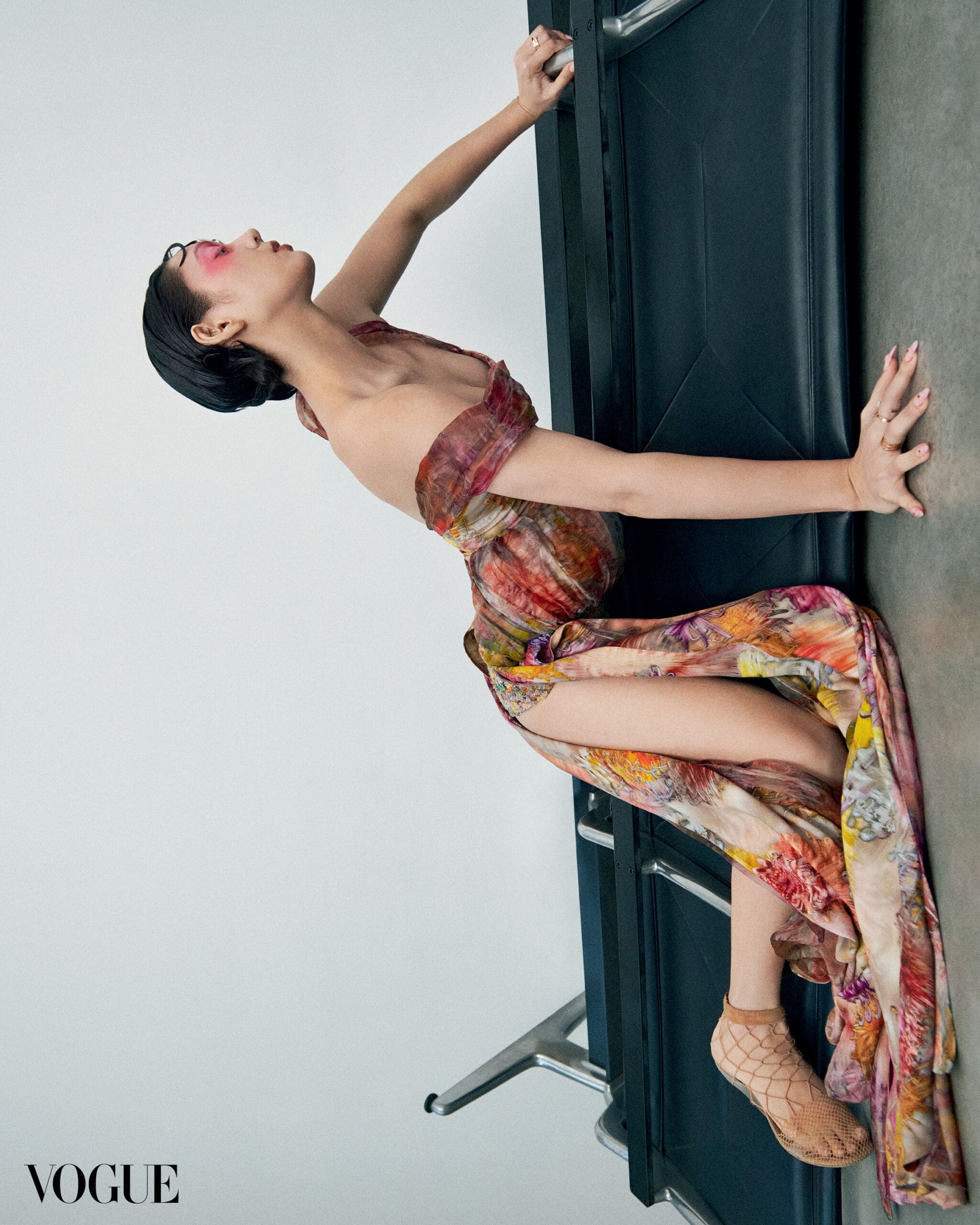
VP: How does this project touch on the beauty narrative—on representation, diversity and self acceptance?
KJ: On my end, I do feel that this is quite personal, I guess. And being in front of the lens of a friend helped immensely. But I mean, specifically for me, at this time in my life, you kind of have these revelations that occur in retrospect. In most of my career, I have found myself kind of compromising, or even censoring myself a lot. Whether that be for an industry or for society, or, you know, I think sometimes, just to be completely frank, I felt like I’ve been playing a role and there are certain rules that you must follow. You know, don’t be too sexy, don’t be angry, don’t be calculated. You kind of have all of these rules imposed on you just for existing. I think in the creative space, that’s why I gravitate toward it because you can break those rules. And, you know, as I’m in my 30s, I enjoy breaking those rules. I enjoy challenging them. And yeah, being able to explore the less conventionally “beautiful” sides of myself. I think, in that sense, this shoot was also very memorable for me in terms of what it means to challenge that beauty narrative.
[Melissa was] very sensitive. We spoke so often, we had countless Zooms, countless dinners and meetings whenever I was in New York, or we were in the same city, trying to flesh out what we wanted this shoot to look like. You were always very sensitive to like, “How does this make you feel, are you okay with it? I think that’s the best part about collaboration is that it’s community, essentially. And there are so many things that sometimes I don’t see in my periphery, creatively, that you brought up. I remember thinking like, genius, you know. It was great to leapfrog off of the ideas that you had, and, you know, and build on them together. But then ultimately, on the day of the shoot, just throw it all out the window and just start yelling at the camera, you know?

VP: What happens when creatives are friends? What does that intimacy expose?
ML: I guess the most striking element is not having that initial barrier. You know, and it means that you can be a bit more vulnerable because there is that trust. And there is already dialogue. Dialogue that has happened before, that’s occurred before, that you can pull from and draw on and leapfrog off. It’s a much more enriched experience.
KJ: Yeah, I think we kind of touched on that. We’ve really touched on what it’s like and the trust thing is a big part of that. Melissa, you have worked in Australia, Milan, and New York. How do your roots influence your work?
ML: I think having grown up between Sydney and Palawan… It really gave me an understanding, it’s not just what you see in the West. I think an understanding of humanity, and that there is more to what meets the eye. It has given me a sensitivity toward people. There is this stereotype of the Filipino woman in the Western context, and also leans into, the stereotype of an Asian woman: she’s quiet, she’s passive, and she’s subdued. She’s a step behind and not visible. I guess I’ve kind of felt like that in many ways for a very long time and without being conscious of it. Perhaps only since BLM and #MeToo, and having had time in the pandemic to take stock of where I’ve been in my life. Looking back on my career, I’ve always been the one behind and the one that’s kind of invisible. And, actually, Edward Enninful, in his recent autobiography, he wrote this amazing line. He was like, “As a person of color, I often would find myself in the service to the talent, not the talent themselves.” His book is amazing, it really resonated with me. I think only recently I’ve flipped it, and it also coincides with the emergence of Vogue Philippines and why this kind of work is so important, it shows people that, we’re not just these stereotypes. We’re not just that, we are so much more. We’re so much more powerful and complicated, complicated in all the best ways. We have such a rich and strong cultural history and something to be really proud of. I think with this shoot, particularly, and being empowered by picking up the camera has really been a reflection of how I’ve felt like I’ve existed as a Filipino person, as a mixed-race Filipino person in this world, especially in the fashion industry.
KJ: Yeah. Yeah, I think what was so moving about this collaboration with you, was, you being the photographer also, in some way empowers you to be an author of sorts. So you’re now part of the conversation, you now have something to say, you’re authoring this work, essentially, that maybe hasn’t always been as accessible. And I always think about this because I always think about my mum’s experience. And, obviously, that’s greatly impacted the kind of woman I am now. But, it is true, Filipina mothers were conditioned to believe that, you know, in order to provide for their families, they had to become a nurse, and my own mother left her family to move to Oman to become a nurse. She graduated, she finished her education, moved to Australia, and was judged because the education that she had received was perceived as being lesser than if she had gotten her degree in Australia. And I always think about that and what that must have been like for her and what that experience was like for her. I think it carries into also how I move about my work, especially as a creative. I’m not a nurse, I didn’t become a nurse. But I remember interviewing my mum for a script I’m writing, and just listening to her whole life outside of the Philippines and everything she had to sacrifice and build in order for me to be able to do work like this now is also very much of the soul of, I think, what I want to contribute to the creative space as well.
ML: In the global creative space, how does fashion plant seeds that Filipino voices and Filipino stories matter?
KJ: I think this is so exciting. I just think it’s so exciting. I swear, there are Filipinos everywhere. Everywhere. And I just think that is part of the most exciting, when I was talking about, you know, this hummingbird perspective, of cross-pollination. I think that’s the most exciting part about being a Filipino in the creative space.
Growing up in Australia, you have that same connection when you meet another Australian. But when you meet Filipinos, there’s something immediately tethered, that tethers you to one another, and I think that is that understanding of each other’s circumstances and each other’s stories, knowing that your parents are immigrants, knowing that you know, you just have a shared experience. Then when you, in turn, kind of mash all of those experiences together, you get something really special.

Makeup: Allie Smith of MA+ World Group using Westman Atelier. Hair: Nero of MA+ World Group. Model: Kim Jones. Producer: Hannah LePage. Project Manager: Bene Studio. Photographer’s Assistants: Nick Brinley, Nick Ong. Makeup and Hair Assistants: Takanori Shimura, Ubu Nagano. Stylist’s Assistants: Mary Ocean, Shao Liang, Vivian Chaung. Stylist’s Intern: Maria ㎗㎽㎑㏀㎌㏅㎿㏖㎽. Shot on location at Vandervoort Studio.
